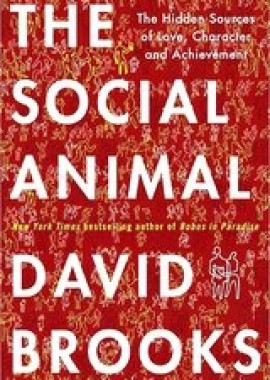This book is mostly an exploration of neuroscience and psychology in which the author, in order to relay the sometimes complex information, tells the life story of two fictional characters who serve as models for the concepts. This encompasses many aspects of life, but there are two things in this book that I think are particularly worth noting as we think about health and wellness.
One amazing statistic that the author makes note of fairly early on in the book is about dining out. According to the study cited, people who eat out will eat more than they would at home depending on how many people they are with. Two will eat 35% more at a restaurant than they would at home, four will eat 75% more, and seven will eat 96% more! When you stop and think about it, I would say that makes sense. Groups tend to encourage each other to order more. They might split appetizers, bottles of wine, or desserts or they might entice each other to order things that they are on the fence about. Couples in particular will finish each others food as well, something that almost never happens in the home where portion sizes are in your own control. When you add in bread on the table, often accompanied by olive oil and butter, and/or small side salads it can all add up very quickly.
The next time you are out with a group consider this information and try to make some small adjustments than can help to offset the damage. If you know you are going to split a dessert later, then perhaps you could opt to skip the appetizer. If you are drinking, a bottle of wine might be cheaper, but maybe it is worth a few extra dollars to spare those calories and stick to ordering by the glass (it always seems like that last 1/2 glass at the end of the bottle isn’t really necessary, doesn’t it?). If you are dying to have it all, try to resist the bread on the table or skip the heavy dressing on the side salad. Everything can add up over time to a big health effect. Small, conscious adjustments can make a big difference over the year without taking all the fun out of dining out.
A second point I would like to bring up about this book is its portrayal of the end of life, which is a big topic in the fitness industry right now (www.functionalaginginstitute.com). In the book the main character’s decline at the end of life is pretty severe, culminating in his inability to move about on his own. I think this picture of old age, in which a person slowly does less and less until they spend most of their time sedentary is out of date. For my grandmother’s generation, fitness and exercise barely existed in any widespread, professional form. For my parents generation it was really only in its infancy. Now we know so much more about the benefits of exercise and lifestyle choices and the best ways to achieve those benefits that we need not sit back and watch ourselves deteriorate the way we have been used to. Maintaining strength, flexibility, and cardiovascular fitness and cutting down on poor lifestyle habits in even modest amounts can significantly reduce the risk factors inherent in aging. The evidence is clear that we can be active, productive, and sharp right into the latest stages of life. (1,2,3)
All in all an interesting read with some good take-aways on all counts.
More from me: The Aging Process – Aches and Pains?
1)http://www.health.gov/paguidelines/guidelines/chapter2.aspx
2) http://www.jaaos.org/content/8/1/37.short
3) http://www.webmd.com/healthy-aging/features/aging-health-challenges
